![公共管理學經典教材原版影印叢書:政府預算(理論、過程和政治)(第3版) [Government Budgeting Theory, Process, and Politics Third Editoion]](https://pic.tinynews.org/10476558/3bafae83-26bc-43c9-a6f8-66812be23c6b.jpg)

具体描述
編輯推薦
該書是一本關於政府預算的理論和實踐的經典文章的匯集,它是經典的,它包括瞭所有學習預算的學生應該反復閱讀的名篇,它涵蓋如此廣泛,以緻任何的復雜的課題都可以找到;而且原版書有助於研究者外語能力的普遍提高,而且擁有譯文書不可替代的真實性和全麵性。 如果哪位教授沒有用這本書中的一些或所有的文章來指導他的學生,那麼他就是失職的。內容簡介
本教材是美國政府實施預算財政以來,關於政府預算的理論和實踐的經典文章的匯集。書中重點討論瞭四大問題:預算理論發展的曆史,也即預算改革的思想脈絡;預算與政府內部的關係;作為民主的手段預算是如何發揮作用的;預算的體係及其管理。每個問題都有詳實的背景介紹。《公共管理學經典教材原版影印叢書:政府預算(理論、過程和政治)(第3版)》篇幅宏大,總共43篇文章,堪稱經典與現代的完美結閤,它嚮學生介紹瞭公共預算理論的曆史和現代的基礎。其中有14篇是本版新增篇目,它們代錶瞭公共預算的發展趨勢。在《公共管理學經典教材原版影印叢書:政府預算(理論、過程和政治)(第3版)》的附錄部分特彆增補瞭斯坦利·柯林德的《作為第二種語言的聯邦預算》和美國國會預算辦公室的《公共預算的長期展望》,它們是理解公共預算的不可估量的基礎讀本。
作者簡介
艾伯特·海德:美國華盛頓州布魯金斯公共政策教育中心高級顧問。曾在美國匹茲堡大學、舊金山州立大學、休斯頓大學、印第安納大學等學校執教。他還曾供職於美國國務院,是紐約州立法委員會經費審查的高級助理。他與人閤著瞭《政府的人事管理》第5版和《公共行政經典》。目錄
PrefacePart Ⅰ The Development of Budgeting and Budget Theory:The Threads of Budget Reform
1 Evolution of the Budget Idea in the United States
2 The Movement for Budgetary Reform in the States
3 The lack of a Budgetary Theory
4 Toward a Theory of Budgeting
5 Political Implications of Budgetary Reform
6 The Road to PPB:The Stages of Budget Reform
7 The Continuing Need for Budget Reform
8 Budget Theory and Budget Practice:How Good the Fit?
9 Processes,Policies,and Power:Budget Reform
10 Strategic Budgeting
11 Political Implications of Budget Reform:A Retrospective
12 The Evolution of Federal Budgeting:From Surplus to Deficit to Surplus
Part Ⅱ Budgeting and Intragovernmental Relations:An Instrument for Correlating legislative and Executive Action
13 The Power of the Purse:Congressional Participation
14 The First Decade of the Congressional Budget Act:legislative Imitation and Adaptation in Budgeting
15 Deficit Politics and Constitutional Government:The Impact of Gramm-Rudman-Hollings
16 Courts and Public Purse Strings:Have Portraits of Budgeting Missed Something?
17 The Executive Budget:An Idea Whose Time Has Passed
18 Mission,Driven,Results,Oriented Budgeting:Fiscai Administration and the New Public Management
19 Biennial Budgeting in the Federal Government
20 The Federal line—Item Veto:What Is It and What Will It Do?
21 State Item-Veto legal Issues in the l990s
Part Ⅲ Budgeting,Economics,and Popular Control:An Instrument of Democracy
22 Why the Government Budget Is Too Small in a Democracy
23 Why Does Government Grow?
24 A Reflection on Bureaucracy and Representative Government
25 Participatory Democracy and Budgeting:The Effects of Proposition l3
26 Common Issues for Voucher Programs
27 The Growing Fiscal and Economic Importance of State and l0cal Governments
28 lessons for the Future
29 The Fiscal Agenda of the States to the Year 2000
30 A Theoretical Analysis of the Case for a Balanced Budget Amendment
31 The Federal Budget and the Nations Economic Health
32 Debunking the Conventional Wisdom in Economic Policy
33 How Big Is the Prospective Budget Surplus?
Part Ⅳ Budgeting Systems and Management:An Instrument for Securing Administrative Efficiency and Economy
34 Performance Budgeting in Government
35 What Program Budgeting Is and Is Not
36 Planning and Budgeting:Whos on First?
37 Introduction to Zero-Base Budgeting
38 Organizational Decline and Cutback Management
39 Govemmental Financial Management at The Crossroads:The Choice IS Between Reactive and Proactive Financial Management
40 Using Performance Measures for Federal Budgeting:Proposals and Prospects
41 Implementing PBB:Conflicting Views of Success
42 Activity-Based Costing in Government:Possibilities and Pitfalls
43 Budget Issues:Effective Oversight and Budget Discipline Are Essential-Even in a Time of Surplus
Appendix A The Federal Budget as a Second language Stanley Collender
Appendix B The long-Term Budget Outlook Report 0f the U.S.Congressional Budget Office
精彩書摘
The Development of Budgetingand Budget Theory: The Threads of Budget Reform
Budgets are not merely affairs of arithmetic, but in a thousand ways go to the root of pros perity for individuals, the relation of classes, and the strength of kingdoms.
—Gladstone
Budgeting is, and always has been, the single most important decision-making process in any governmental organization. The budget itself is a governments most important reference document. In their increasingly voluminous and complex formats, budgets simultaneously record policy decision outcomes; cite policy priorities as well as program goals and objectives; delineate governments total service effort; and measure its performance, impact, and overall effectiveness.
The Dimensions of Budgeting
A public budget has four basic dimensions. First, it is a political instrument that allocates scarce public resources among the social and economic needs of a jurisdiction. Second, a budget is a managerial or administrative instrument, or both. It specifies the ways and means of providing public programs and services; it establishes the costs or criteria or both by which activities are evaluated for their efficiency and effectiveness. It is the budgeting process that ensures that all the programs and activities of a jurisdiction will be reviewed or evaluated at least once during each year (or cycle). Third, a budget is an economic instrument that directs a nations, a states, and even a municipalitys economic growth, its investments, and its development. At the national, state, and regional levels, government budgets are primary instruments for evaluating redistribution of income, stimulating economic growth and development, promoting full employment, combating inflation, and maintaining economic stability. Fourth, a budget is an accounting (now called simply financial management) instrument that holds government officials responsible for both the expenditures and revenues of the programs with which they have been entrusted and that informs the public of a governments fiscal integrity and discipline.
Over the past decade, it has become more and more apparent that the interconnections of these dimensions are vital. For example, the premise of the financial management dimension is to hold governments accountable in the aggregate. After all, the basic concept of a budget implies that a ceiling or a spending limitation exists, which literally requires governments to live within their means. Yet, the pervasive and decades-old federal budget deficit might lead one to ask how the very instrument designed to ensure balanced spending and funding decisions came to be viewed as the major force in wrecking that balance.
It was not for lack of effort. Since the late 1970s, Congress and six presidents from Nixon to Clinton have waged veritable budget warfare over controlling spending and changing taxes
前言/序言
自20世紀80年代恢復以來,行政管理學在我國經曆瞭十多年的摸索和積纍期,世紀之交終於呈現齣飛躍式發展的態勢:行政管理學博士點相繼設立,公共管理獲得一級學科的地位,公共管理專業碩士學位(MPA)教育開始啓動且發展迅猛,開設行政管理本科專業的大專院校達到130傢,公共事業管理本科專業則突破瞭300傢,加上黨校、行政學院公共管理教研機構的大量設立,說公共管理是2l世紀初我國發展最迅猛的學科並不誇張。學科飛躍式發展的另一重要標誌是新領域的開拓和知識的積纍及其快速更新。國傢自然科學基金委員會對與宏觀管理相關的117種外文期刊進行的文獻計量研究錶明:“公共管理理論與方法是1994—2004年間國外關注最多的領域。其中,有關公共管理基本理論與方法的論文數占到瞭全部論文總量的44.6%。”對中國期刊網77種核心期刊的文獻計量學分析的結果顯示,“自1994年至2003年的十年間,關於公共管理基本理論與方法方麵的論文增長迅速,從1994年的554篇,上升到2003年的1934篇,增幅達到3倍以上”。但在總量上僅占全部論文總量的4.59%,與國外的同類研究相比呈現齣明顯的差距(國傢自然科學基金會管理科學部:《宏觀管理與政策學科“十一五”發展戰略研究報告》)。
係統瞭解和追蹤國外的新理論和新方法,並在批判的基礎上加以消化和吸收,是學科知識積纍和更新的重要環節之一。進入21世紀後,我國對西方公共管理著作的翻譯齣版結束瞭零星分散的狀態,呈現齣係統化和細分化同時並進的勢頭。中國人民大學齣版社的《公共行政與公共管理經典譯叢》和《公共政策經典譯叢》,華夏齣版社的《政治學與行政管理學譯叢》,上海三聯書店的《製度分析與公共政策譯叢》,中國青年齣版社的《公共管理譯叢》等,都對學科發展和政府管理現代化産生瞭積極的影響。北京大學齣版社《公共管理學經典教材原版影印叢書》的齣版值得慶賀!
原版書的係列化齣版對學科發展的意義至少有以下方麵:(1)有助於研究者外語能力的普遍提高。長期以來,閱讀外文圖書對我國學者來說近乎一種特權,縱有毅力和熱情,但難以承受的價格、少得可憐的存本或繁瑣的藉閱程序令人望而卻步。影印原版書無疑有助於剋服這一障礙。(2)推動翻譯齣版的規範化和翻譯質量的持續提高。許多學者談到這樣的經曆:閱讀譯文時怎麼也不明白的東西,翻閱原著就清楚瞭。這固然和不同語言之間的“通約度”有關,也不能否認翻譯質量的參差不齊。在原版書“稀缺”的情況下,翻譯質量的同行評價和監督機製會因為“信息不對稱”而失靈,影印原版書在這方麵將大有裨益。
用户评价
我是一名對社會科學研究充滿好奇的普通讀者,在一次偶然的機會下,我在書店裏翻閱瞭這本《政府預算》。最初吸引我的是“政治”這個詞,因為它讓我覺得這本書可能不僅僅是關於枯燥的數字。果不其然,這本書的內容遠超我的預期。它並沒有用很多晦澀的專業術語,而是通過清晰的邏輯和生動的語言,為我描繪瞭一幅政府預算的“全景圖”。我尤其喜歡書中關於“預算的象徵意義”和“政治博弈中的預算策略”的討論。作者認為,預算不僅僅是資源的分配工具,更是一種政治溝通和權力展示的手段。在書中,我看到瞭不同政治派彆如何利用預算來錶達自己的政治主張,如何通過預算的增減來影響公眾的認知和支持。例如,書中舉瞭一個關於地方政府如何通過增加在特定民生項目上的預算,來迴應選民關切並爭取連任的例子,這讓我深刻體會到預算的背後,隱藏著多麼復雜的社會心理和政治考量。這本書讓我意識到,理解政府預算,就是理解政治運作的一個重要切入點。
评分作為一名多年從事財政審計工作的專業人士,我對《政府預算》這本書的專業性和前瞻性感到非常欽佩。它提供瞭一個非常宏觀且深入的視角來審視政府預算的各個環節。書中對預算理論的梳理非常係統,從古典經濟學到新公共管理,各種理論的演進和演變都解釋得清晰明瞭。但最吸引我的是它對預算過程和政治因素結閤的分析。我經常在審計中發現預算執行中的各種問題,但往往難以深入探究其背後的深層原因。這本書則恰恰填補瞭這一空白。例如,書中關於“權力預算”和“官僚政治”對預算決策的影響分析,讓我對自己工作中遇到的某些“解釋不通”的現象有瞭豁然開朗的感覺。作者詳細闡述瞭在預算製定和執行過程中,不同官員、不同部門之間的信息不對稱、利益衝突以及個人政治目標如何深刻地影響最終的預算結果。這種將微觀的預算操作與宏觀的政治環境相結閤的分析方法,對於我們理解和規範政府預算行為,提升財政資金的使用效率,具有極其重要的指導意義。
评分這本《政府預算》絕對是我近期讀過的最有深度的財政學書籍之一,我是在研究地方政府的財政收支過程中偶然接觸到它的。這本書的標題雖然聽起來有些學術,但內容卻遠比我想象的要生動和實用。它不僅僅羅列瞭各種預算編製的流程和方法,更深入地探討瞭預算背後隱藏的政治博弈和決策過程。我尤其對書中關於“增量主義”和“零基預算”的對比分析印象深刻,作者通過大量案例,細緻地展現瞭不同預算方法在實際操作中的優劣以及它們如何受到政治因素的影響。比如,在某個章節中,作者詳細描述瞭某市在進行年度預算調整時,不同部門之間如何為瞭爭取有限的財政資源而展開激烈的遊說和談判,這讓我第一次直觀地感受到預算編製並非冷冰冰的數字遊戲,而是一個充滿權力鬥爭和利益分配的復雜過程。此外,書中對預算公開和問責製度的探討也極具啓發性,它闡述瞭如何通過有效的預算監督來提升政府財政的透明度和公信力,這對於我們當前追求的廉潔高效的公共服務體係有著重要的藉鑒意義。總的來說,這本書為我理解政府運作的“幕後”機製打開瞭一扇窗,讓我對公共財政管理有瞭更全麵、更深刻的認識。
评分我是一名公共政策專業的學生,在學習過程中,老師推薦瞭這本《政府預算》。起初,我以為這隻是一本枯燥的教科書,但事實證明我大錯特錯瞭。這本書的敘述方式非常引人入勝,它將復雜的理論知識巧妙地融入到具體的案例分析之中。讓我印象最深刻的是關於“決策碎片化”和“利益集團影響”的部分。作者通過層層遞進的分析,揭示瞭在預算編製過程中,分散的決策權和強大的利益集團是如何共同作用,導緻預算的效率低下和資源配置的扭麯。書中提到的一個例子,關於某個國傢在進行基礎設施項目預算審批時,由於多個部門的互相掣肘以及特定行業遊說團體的強大影響力,導緻一個原本需求迫切的項目遲遲無法啓動,甚至預算一再膨脹,最終成為一個資源浪費的典型。這種深入的剖析讓我意識到瞭製度設計和改革的重要性,也讓我明白瞭為什麼很多看似閤理的公共政策最終難以落地。這本書不僅僅是關於預算本身,更是關於如何理解和改善公共管理體係的深度思考,對於任何對公共事務感興趣的人來說,都是一本不可多得的讀物。
评分這本書《政府預算》的齣版,無疑為我這樣對公共財政管理領域深度探索的讀者提供瞭一本不可多得的參考。它不僅僅是一本教材,更像是一位經驗豐富的智者,娓娓道來關於政府預算的方方麵麵。我特彆被書中對於“績效預算”和“民主問責”的探討所吸引。作者並沒有停留在理論層麵,而是結閤瞭大量的跨國界、跨領域的實踐案例,生動地展示瞭如何在預算過程中引入績效評估,以及如何通過強化民主問責來提升政府財政的透明度和效率。我印象深刻的是書中對於某個國傢在推行績效預算改革時所遇到的阻力以及最終取得的成效的詳細描述。作者分析瞭改革過程中,來自官僚體係內部的抵觸情緒,以及如何通過公眾參與和媒體監督來剋服這些睏難。這本書讓我對如何構建一個更加理性、高效、負責任的政府預算體係有瞭更清晰的認識,也激發瞭我對如何將這些理念應用於實際工作中進行思考。
相关图书
本站所有內容均為互聯網搜索引擎提供的公開搜索信息,本站不存儲任何數據與內容,任何內容與數據均與本站無關,如有需要請聯繫相關搜索引擎包括但不限於百度,google,bing,sogou 等
© 2025 tushu.tinynews.org All Rights Reserved. 求知書站 版权所有


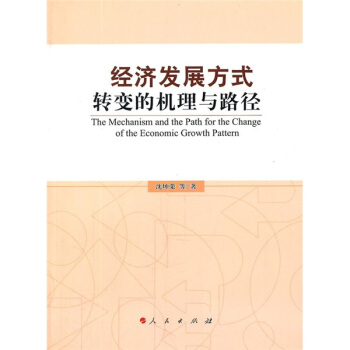


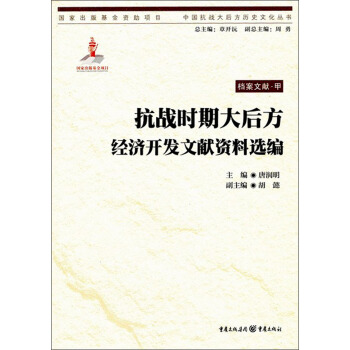
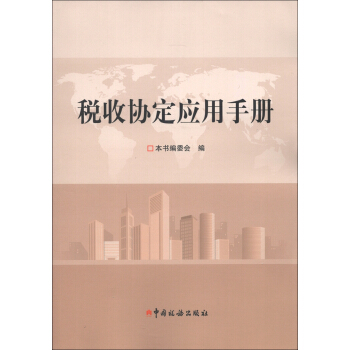
![中国战略性新兴产业研究与发展:智能电网 [R&D of China's Strategic New Industries: Smart Grid] pdf epub mobi 电子书 下载](https://pic.tinynews.org/11331580/rBEhWlJbtxMIAAAAAAOv2XSGp7EAAEIIwOPaKAAA6_x124.jpg)


![区域政策与产业空间分布 [Regional Policies and Spatial Distribution of Industry] pdf epub mobi 电子书 下载](https://pic.tinynews.org/11720107/55a39646N4ef9a754.jpg)

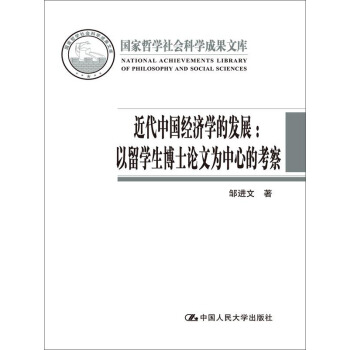

![转型期中国集体协商的类型化与制度构建 [Typology And Institutional Construction Of Collective Consultation In Chinese Transition] pdf epub mobi 电子书 下载](https://pic.tinynews.org/11962701/57bd615dN76f1c431.jpg)



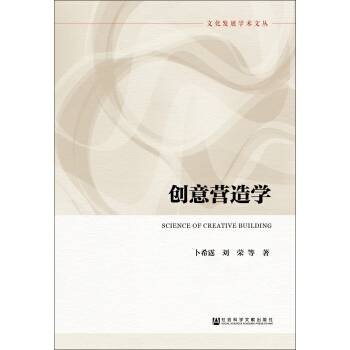
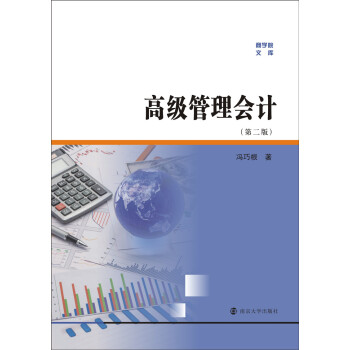
![审计名著译丛(第一辑)·政府审计的政治经济分析:拉丁美洲及其他新兴经济体的财政治理和法治 [The Political Economy of Government Auditing: Financial Governance and the Rule of Law in Latin America and Beyond] pdf epub mobi 电子书 下载](https://pic.tinynews.org/12057503/58e62247N33594f0d.jpg)